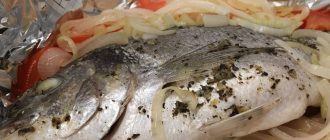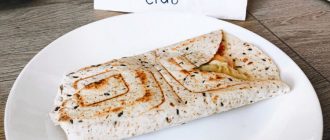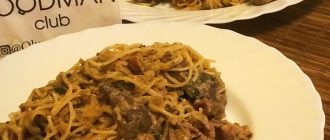
So revered and widespread in the world a rice dish called PLOV, came from eastern nationalities, who cooked pilaf from ancient times. The first mention of pilaf date back to X-XI centuries, it is mentioned in the annals of those times.
Any traditional ceremony from wedding to funeral is associated with cooking and serving, the main component of which was fig. Meat and spices were added to it. References in later documents contain more detailed information existing in those recipe times. It was a way to cook rice with chopped meat, and its precise technology as a warning to posterity. From there the legend came that tells how Avicenna resorted to treatment with a dish of rice and meat alone senior gentleman. Then pilaf appeared real name.
Pilaf is revered among the eastern peoples thanks not only to its excellent qualities like good and tasty food, but also a dish, with healing properties.
After active labor, prolonged abstinence from food or even bloodshed, first things first, people were persuaded to eat pilaf, since it was believed that it was pilaf that would contribute to the restoration forces in the shortest possible time, prevention of exhaustion. Pilaf is capable of return to man his health and raise his fighting spirit.

Today we use many recipes and technologies. preparing this fragrant dish, many of them were improved. Today, pilaf is a national dish of Kazakhs, Tajiks, Armenians, Uzbeks, Arabs, Azerbaijanis, residents Turkmenistan, Tatars and other Islamic countries.
Different nations cook pilaf in their own way
Tajik national cuisine includes several dozen types pilaf. The most common recipe is gelak scorching (instead of pieces of meat used meatballs), we love pilaf no less “in Dushanbe.” Love this rice dish and performed by chicken, shawl and, of course, the classic Tajik pilaf.
Different cooking technologies and types of pilaf provide variety in the tastes and appearance of the cooked dish. They are different features of the components in the recipe, processing methods.
However, there are similarities in cooking. Almost every pilaf in Tajikistan they cook by firing oil and frying onions in it, carrots, spices and spices (zirvak). Tajik pilaf cooked in a cast-iron boiler with fat tail or mutton melted fat, vegetable fat or a combination thereof. For achievement different aroma, fats are heated over high heat and besides onions add meat bone in boiling oil. The temperature of hot fat is more than 200 C.
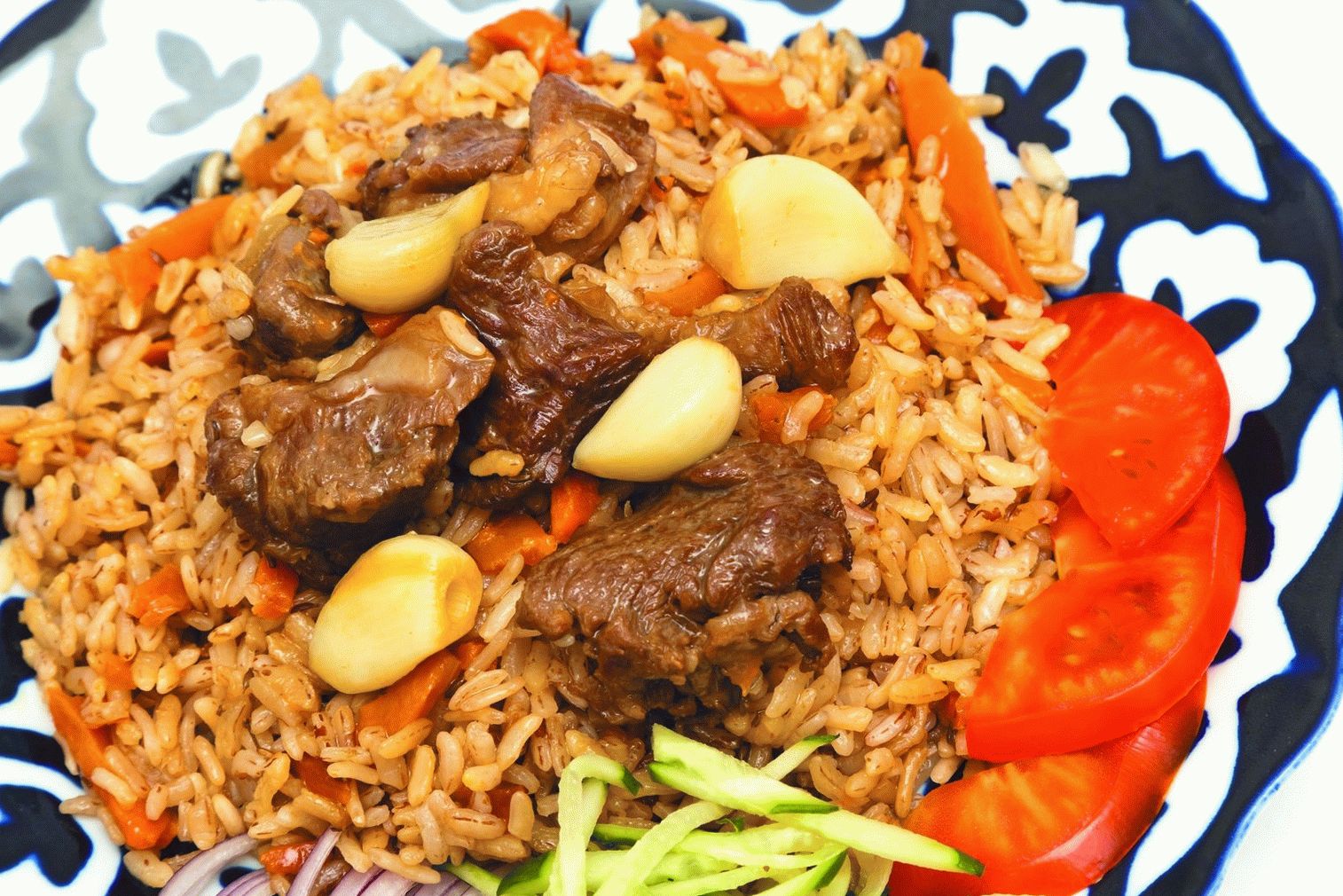
Classically pilaf is prepared from different types of meat: lamb, poultry (chicken), beef.
The meat must be washed and cut into pieces. Different types of pilaf suggest different sizes of pieces of meat – from twenty grams to kilograms.
Rice is carefully sorted, washed well in cold water, pouring all the starch, soaked for several hours in salted warm water. While the rice is infused, peel the carrots, cut it into thin strips or rub on a coarse grater. For pilaf You can use yellow carrots.
Spices for pilaf are a very special range: red paprika and black pepper, dried barberry, seeds anise, sultanas and saffron. The characteristic aroma gives zira, completely special taste – depending on at what moment and in what form add it – garlic.
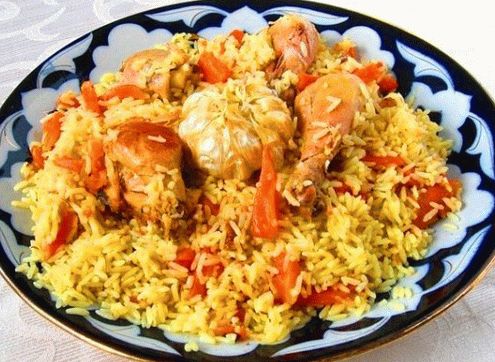
For a change, quince and dried fruits are sometimes added to pilaf. Pilaf serving to guests or household is also original. It is poured with slide on a large deep plate, round dish, top on rice spread the meat and then sprinkle with chopped herbs or grains pomegranate fruits. Various salads go very well with pilaf from fresh vegetables (especially tomatoes and cucumbers), herbs and green onions, fruits.
Uzbek cuisine is famous for pilaf recipes with minced meat, onions and carrots. In Uzbekistan, pilaf is cooked in a variety of ways; they are also used several recipes that differ in type of meat, which is put in pilaf.
Any Uzbek pilaf is very fatty, both vegetable and animal origin. Often they cook it so that both rice and vegetables were cooked in one cast iron. Here to be observed specific sequence.
First you need to overheat fat. Cast iron is heated on a strong a fire, cotton is poured into a red-hot pot, or perhaps vegetable oil. When it overheats, first appears characteristic black smoke, and then it whitens. For overheating vegetable oil, cast-iron cauldron languish over moderate fire, sometimes stir the oil with a slotted spoon.
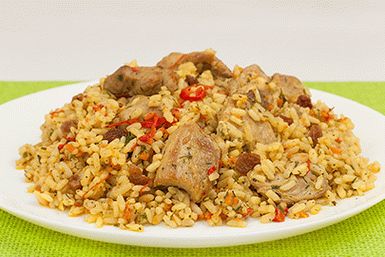
The secret of cooking in an onion thrown in oil is a simple guess – onions neutralize bitterness from oil. For to remove fat from animal fat, lamb is cut into cubes, melt, removing the greaves having a golden brown color, and then warm the pure fat for another 5 minutes over low heat. it destroys a specific smell.
No pilaf will be so fragrant if you skip the next stage in the preparation of pilaf. Zirvak – seasoning, very important process. In hot oil all the spices give their tastes and aromas. Then they put the meat and stew it. Must not be allowed overcooking, foods are fried so that they look as in the original form, so that they do not stick to the bottom of the boiler, if necessary – you can reduce and add fire.
Salt pilaf twice. Zirvak should already be fried on a weak the fire. Spices and meat are added to it, after processing extinguishing is completed, add rice. It’s important not to mix zirvak and a layer of rice, it should be on the surface so as not to stick to the bottom of the boiler. When put rice, you need to salt add water in a volume of 1.5 volumes of rice and bring to readiness.
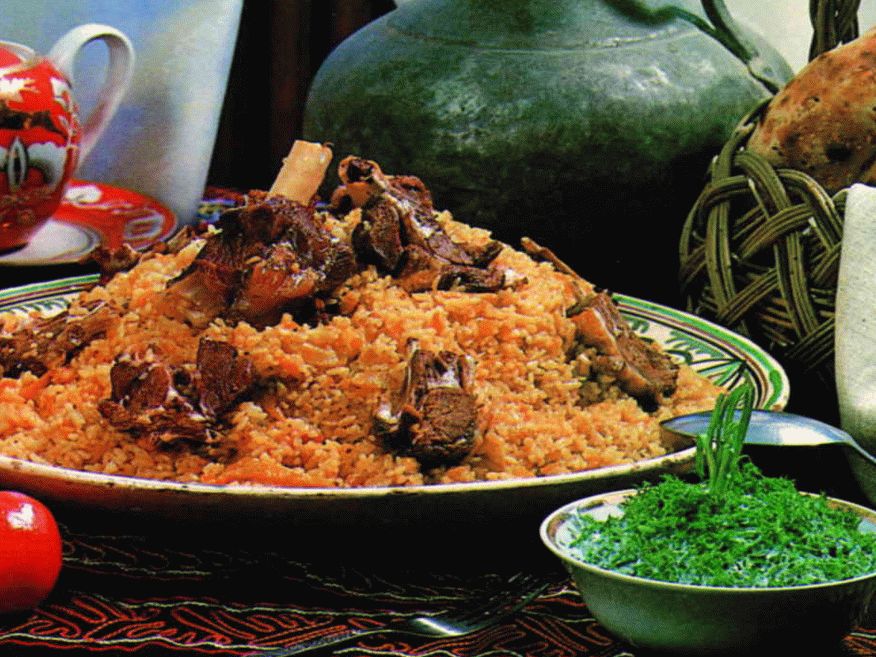
Turkmenistan is distinguished by the preparation of mutton pilaf, sometimes from game (partridge, goose, duck, hare and meat of fallow deer and gazelles). Horse meat is not consumed in pilaf.
Afghanistan divides the preparation of pilaf into two boilers: in one – seasoning, in another – rice.
Azerbaijan uses several recipes for pilaf, distinguishing between recipes for the types of mortgaged meat and spices, as for making rice, it is prepared in two ways: boil in water and recline in a colander, or simply boil in water. A variety of recipes for pilaf from lamb, fish – far from complete list of pilaf species in Azerbaijan. Pilaf happens with vegetables, in it add berries and fruits. Easy to navigate by name, what ingredient was used in pilaf: chygyrtma, pilaf lobi-chil, pilaf with kaurma, sabza-kaurma, juja-pilaf (with chicken), etc.
To cook rice, they sort and soak the rice on a couple of hours in cool water, putting a small gauze inside bag, pre-put salt in it. Before laying in the boiler rice is washed in warm water, poured into boiling salted water (proportions: 1 liter of rice requires 6 liters of water), rice is cooked until semi-preparedness. After being thrown back into a colander and allowed to drain rice, it is put in a pan where the butter has already been preheated and pita bread is placed. Now the pilaf is cooked on low heat. Hot cooked pilaf sprinkled with butter, melted on water bath.
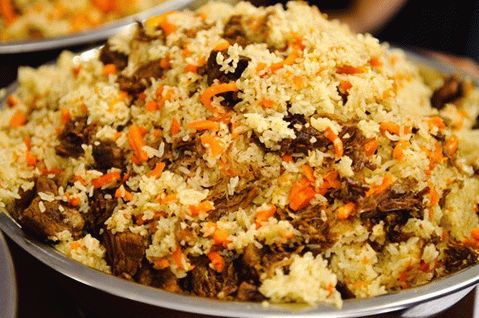
Armenia prefers to call pilaf “float”. It is cooked by two ways: folding and sewing, otherwise they call it “porridge”.
One of the most interesting pilaf recipes we offer your attention.
Chavlya
The meat needs to be cut into medium pieces, fried in oil, fry the onion there until a beautiful golden color, then pour broth (water possible), add carrot cubes, spices (salt, pepper) and bring to a boil.
When the water boils, lay the washed rice. To prevent water boiled, cook without a lid. Before serving, close the lid and leave to languish in the oven.
Pilaf “Ugro” without rice
The meat must be cut into small pieces, fry until golden crusts, add onion, sliced in half rings, and carrots, chopped, fry for about 10 minutes.
For garnish, you need to knead fresh dough. Roll the dough thinly cut into strips of noodles and dry in the oven until purchase golden noodles. Then it needs to be cooled, crushed to the size of rice, add to the pot with meat, pour water and cook on simmer until cooked. This kind of pilaf also fits slide and sprinkle with finely chopped herbs. This one goes well recipe with vegetable salad.

Gelyak scorching
Lamb (beef) pulp with onions and garlic are skipped through a meat grinder, salt, flavored with zira, formed from it small meatballs.
In a very hot fat fry the onion and chopped straws carrots, pour water and bring to a boil. Stew in this broth meatballs, add the rest of the carrots, lay the rice, add salt and bring to readiness.
Traditional pilaf Tajik cuisine
On very hot fat, the bones are fried until brown. Then you need to add the onion in half rings and fry it for about 3 minutes. Slices of meat should be fried until golden brown, add julienne carrots and spices: red and black pepper, zira, dried berries of barberry and fry still about ten minutes. Then pour fried vegetables and meat with water, salt, boil over low heat, add rice, pour water, gently leaving a layer of rice not mixed and cook until boiling water. Then pick up the rice with a slide, cover the boiler, cook until pilaf is cooked on a slow the fire.

Dushanbe
The lamb meat pulp, together with onions, must be grinded in a meat grinder, minced salt and pepper. Hard boiled eggs shells, wrap in round tortillas rolled out of minced meat, and in fry in this form until half cooked.
In hot fat you need to lightly fry onions, grated carrots, pour water and let it boil. On a layer of egg-stuffed meat with with spices (salt, pepper, zira, barberry) put rice, level slotted spoon. Pour water, and when rice absorbs water, boil, and then cover it tightly and bring to readiness on weak the fire.

